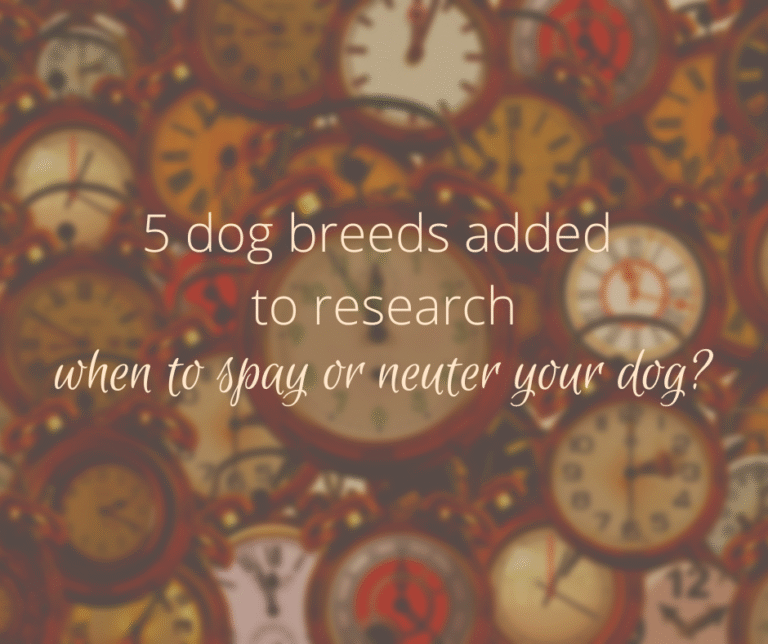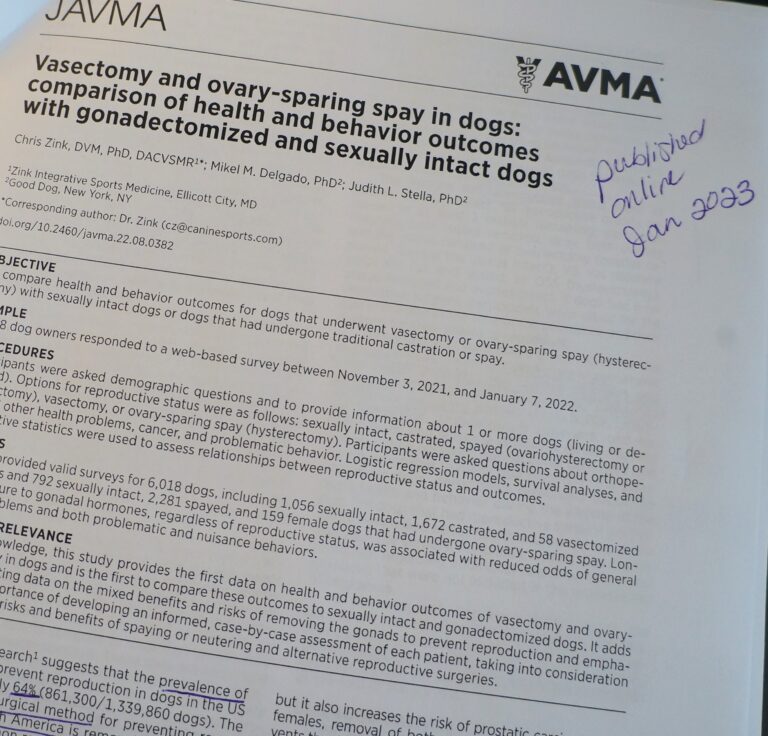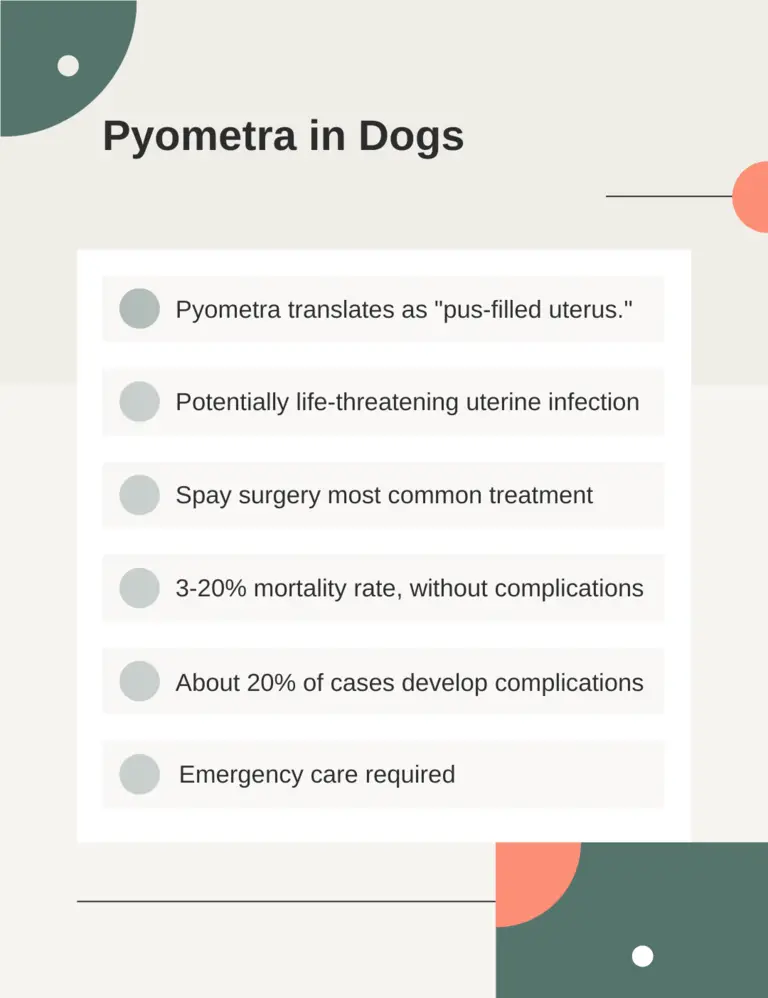Dog Spay or Dog Neuter Resources
Rather than make you dig around for all the articles we’ve published over the years about spaying or neutering your dog — when to do it, what surgery to choose, what it’s important, we gathered all those links in one place. Here you go: all the dog spay or dog neuter resources we have … so far.
Maybe it’s important for me to say that I worry about spaying or neutering dogs really young, as is common in animal shelter and animal rescue settings. Read through some of the breed-specific research linked below to learn more about health risks of doing dog spay or dog neuter surgeries before they reach physical maturity.

-
5 New Breeds Added to When to Spay or Neuter Research
The research I first wrote about in 2021 that offered recommendations on when to spay or neuter 35 dog breeds has expanded to include recommendations for 5 more breeds — German Short/Wirehaired Pointer, Mastiff, Newfoundland, Rhodesian Ridgeback, and Siberian Husky. Let’s take a look at the details for these new breeds.
-
Dog Vasectomy and Ovary-Sparing Spay Study
With increasing interest in the benefits of dogs’ longer exposure to gonadal hormones and demand for options other than traditional spay/neuter, a study published in early 2023 caught my attention. It compares health and behavior outcomes for dog vasectomy and ovary-sparing spay patients with both sexually intact dogs and those with gonads surgically removed as is the current standard practice. It’s a small sample for dogs who’ve had those surgeries, but the results look interesting. I tried to include most of the important points. The full list of health conditions compared is long, but researchers grouped them as follows:
– Orthopedic problems, including blown knees
– Cancer
– Obesity
– Endocrine disorders (thyroid disease, diabetes)
– Reproductive disorders
– Other health problems (dental, heart, kidney, and eye diseases and disorders)
– Problematic behaviors (aggression, anxiety)
– Nuisance behaviors (mounting, marking) -
Pyometra in Dogs Questions and Answers
Because I wrote a best-selling pet loss book, people often email me with stories of how their dogs died. Recently, someone asked me to write about pyometra in dogs because they’d recently lost their 11-year-old female dog to it. So in honor of that sweet dog, I gathered all the top questions and answers about canine pyometra, which is a potentially life-threatening infection in the uterus. Maybe useful to you now or in the future. Maybe a few stats, symptoms, and risks you didn’t know. Plus, one real-life story of a dog who survived pyometra in our family.
-
When to Spay or Neuter Your Dog
The veterinary profession continues to learn about the long-term health effects of surgeries done to prevent unwanted canine pregnancies. These insights help Dog Moms and Dads make better decisions about when to spay or neuter dogs. Simply put, our goals must bridge both reproductive protection and long-term comfort and health for the dogs we love. Researchers from UC-Davis looked at associated joint disorders, cancers, and urinary incontinence in 35 dog breeds and offered insights on making this important decision. In some cases, the best option may be leaving some dogs intact.
-
Why I Chose a Traditional Spay for My Dog
When it came time to spay Clover, after letting her go through one heat cycle and waiting for her extremely LONG false pregnancy to end, I had a LOT of questions about a traditional spay versus other surgical options. I know that seems silly considering that I’ve had dogs my whole life and write professionally about veterinary medicine, but I had NOT had to have a dog spayed since 1990 (because Lilly was spayed prior to our adoption), and I didn’t know how much had changed. I wanted to make a good decision.
-
When a Puppy’s UTI Won’t Go Away
Based on my history with dogs, it seems I’m not allowed to have ones that are 100% healthy on arrival. So, when we got the call a week before Clover’s anticipated flight to Colorado telling us she had a urinary tract infection, we weren’t surprised. No biggie, we thought. Get her on meds, and we’ll take care of the rest from here. After weeks and weeks and weeks of meds, when the UTI remained, we headed off to see the veterinary specialist.






